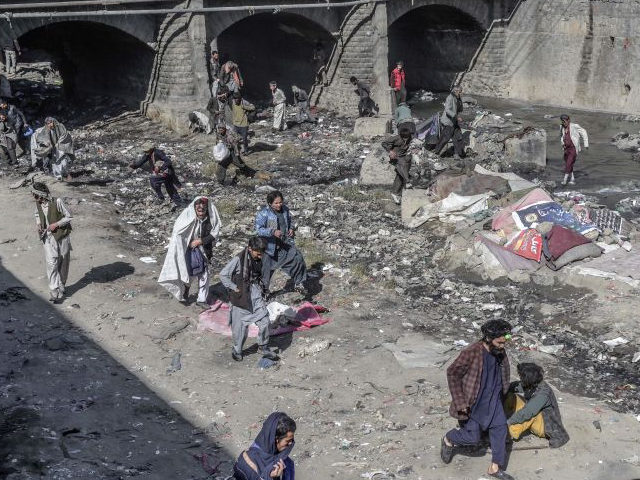The number of people using heroin under Kabul’s notorious Pul-e-Sukhta bridge — long synonymous with hard drug use — has increased since the Taliban seized control of Afghanistan in August 2021, people living near the bridge told Deutsche Welle (DW) on Thursday.
“Locals say heroin use centered around this infamous Kabul bridge has worsened under the Taliban,” Deutsche Welle (DW) reported on February 10.
“In this place, four or five people die every night under this bridge,” an unidentified man told DW. He referred to the Pul-e-Sukhta bridge, which spans the polluted Kabul River in the Afghan national capital’s western region.
“The Taliban are against drug use,” DW acknowledged on Thursday. “But most international NGOs and charities fled Afghanistan under Taliban rule. This makes it harder for drug addicts to get the help they need.”
The Afghanistan Analysts Network (AAN) observed in August 2014 that the “plight” of Kabul drug addicts “is only marginally mitigated by the assistance that state medical facilities and non-governmental organisation (NGO) programmes offer.”
“Thousands of people become addicted to drugs every year in [Afghanistan] a country that is the world’s major producer of opiates, although many of them developed the habit while living abroad as refugees,” AAN, an independent non-profit, reported at the time.
An AAN journalist who visited Pul-e-Sukhta bridge in 2014 estimated 300 people lived under the structure at the time, noting that drug users lived across multiple settlements “under Pul-e Sukhta and other nearby bridges.”
“[A]ccording to some of the men living under the bridge, every month two-to-four of them die,” the organization relayed. “The number of deaths increases in winter when the addicts do not have sufficiently warm clothes or heating material.”
AAN interviewed Afghan security officials in charge of Kabul’s District Six, which is the area containing Pul-e Sukhta bridge, in August 2014. The officials told AAN drug sellers cut deals with local police and government employees who looked the other way as they supplied Kabul’s hard drug habit.
“An official who asked not be named said that stopping the supply of drugs in town was nearly impossible, since the suppliers had connections with high-ranking government officials,” AAN reported.
“You arrest these suppliers, but their connections have them released and in the end you find yourself behind prison gates,” an anonymous Afghan security official said.
It remains unknown if Taliban members have supported similarly corrupt practices at Pul-e-Sukhta bridge since the group seized power in Kabul in August 2021. The Taliban, which is based on Sunni fundamentalism, ousted Kabul’s U.S.-supported government last summer. The takeover came after Washington backed Kabul, Afghanistan’s seat of government, for nearly two decades following its invasion of Afghanistan in late 2001. In a stark reversal of events that transpired last August, the U.S. in the autumn of 2001 ejected the Taliban from Kabul’s government after the group ruled Afghanistan from 1996 to 2001.
The Taliban indicated a desire to curtail hard drug use in Kabul shortly after seizing power in the capital on August 17, 2021.
“We are assuring our countrymen and women and the international community that Afghanistan will not produce any kind of narcotics,” Taliban spokesman Zabihullah Mujahid told reporters at a press conference in Kabul.
“Today when we entered Kabul we saw a large number of our youth who were sitting under the bridges and next to the walls and they were using narcotics,” he said. “This was so unfortunate. I got saddened to see these young people without any faith in the future.”
“From now on, Afghanistan will be a narcotics-free country,” the Taliban mouthpiece vowed.
Reports by the Associated Press (AP) and Agence France-Press (AFP) in October 2021 revealed the Taliban was forcing Kabul drug addicts into rehabilitation centers bereft of basic human rights in an effort to achieve its stated goal of eradicating illicit drug use in Afghanistan. The Western news agencies detailed how Taliban members rounded up drug fiends under Kabul bridges, using violence or threats of violence to arrest the addicts before shipping them off to clinics where they are forced to quit drugs overnight, without traditional methods of assistance.
“There is little methadone available to help wean the opium and heroin addicts, and nothing to remove the withdrawal pains for those being weaned off of meth, doctors say,” AFP reported on October 20, 2021.

COMMENTS
Please let us know if you're having issues with commenting.